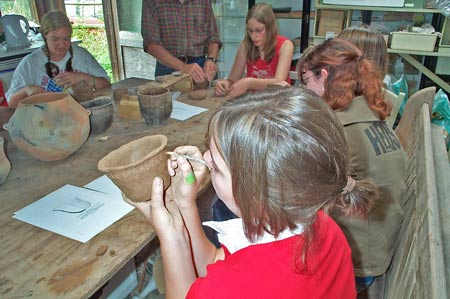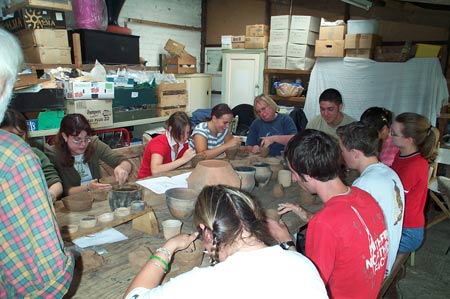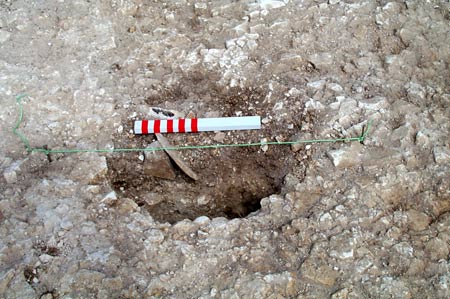Our day started with a short talk by John Winterbottom, a local potter with a particular interest in prehistoric pottery. He showed us samples of different inclusions (materials mixed with clay to avoid breakage during firing) - crushed burnt flint, local heath-stone, shell and grog (crushed pottery).

His beautiful replicas of Bronze Age and Iron Age pots inspired us to have a go and we were all keen to get started. Everyone made a pinch-pot, adding coils to increase the size. We decorated our efforts with a variety of stick and bone implements and the finished pots were put carefully to dry, ready for firing at the end of the week.

After coffee it was back to the site to investigate some of the postholes revealed by yesterday’s hard work with hoe and shovel. The holes varied considerably in depth – some quite shallow and others deeper and more structural. Flint nodules had been used as packing in some and in one, traces of a timber post could be seen as lighter coloured soil. A snapped blade or flint flake was found in one of the holes.

We are hoping more work will show some pattern in the postholes and pits and give us a clearer picture of what structures were built on this part of the site.